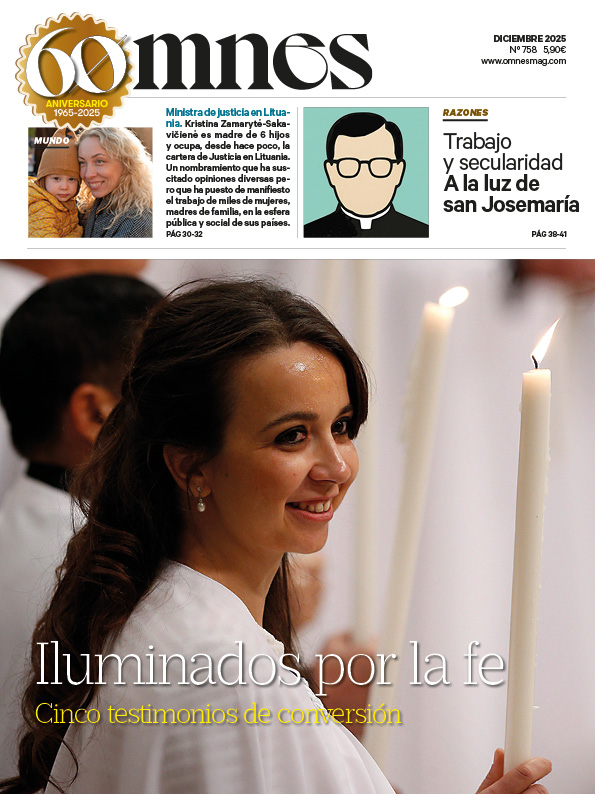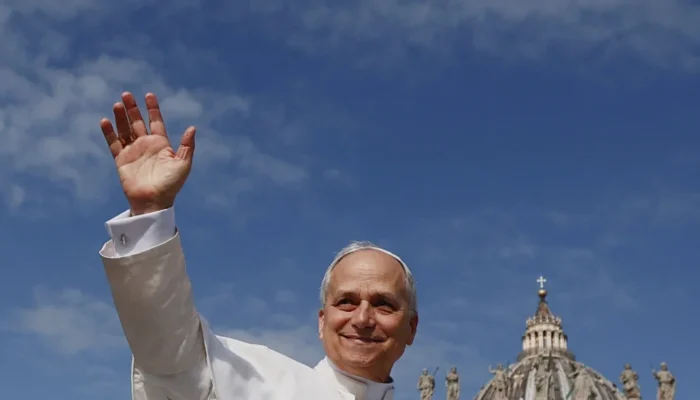Many years ago, in 1979, the then Cardinal Luciani of Venice distinguished in an article on St. Josemaría Escrivá de Balaguer between a spirituality for the laity and a lay spirituality. The first would be that of St. Francis de Sales and the second that of St. Josemaría.
Logically, it does not make sense to classify spiritualities as good or better, but it does make sense to make sure that you are providing the right spirituality to the audience you have in front of you when you give a means of spiritual formation, deliver a homily, or teach a catechism class.
Humility, the center of the Christian life
On this occasion I wish to refer to an interesting work by Joan D. Chittister on the virtue of humility and more specifically on the degrees of humility as described by St. Benedict in his famous rule.
It is clear that the author, a nun of the Benedictine Abbey of Eric, Pennsylvania, well known for her numerous works of spirituality, simply intends to apply the works of St. Benedict, 6th century, to the United States of the 21st century, without further delay or acclimatization.
Of course, what our author intends to do is to focus her fellow citizens on the virtue of humility, which is the key to personal holiness. As our 16th century classics affirmed: "in humility is truth".
In fact, in the canonization process, the first and most important thing is to read in the Positio about the life, virtues and fame of holiness, how the servant of God has lived charity to a heroic degree, that is, love for God, love for the Church and love for all souls. Not in vain was the commandment of Jesus Christ the commandment of charity.
But, it is necessary to recognize it from the beginning, then, it is necessary to read the chapter dedicated to the virtue of humility, not only the virtue of theoretical humility: its conception, importance, meaning and scope. But fundamentally, how the servant of God took the blows and humiliations of life, that is, not the theoretical humility of the books and manuals of spiritual theology, but the real and concrete life.
In this sense, the author, after briefly exposing the chaos of life we lead in the West, the multiple and varied occupations, crises and moments of intense ups and downs, stops to make the first accurate analysis of this work: "What we have really lost is the awareness of who we are and what our place in the universe is, and what this means in everything we do" (13).
The virtue of humility in this work is very clearly stated from the very beginning: we must be well centered in the love of God and of souls. With a clear conviction: we mature to the extent that we love.
Next, he will speak to us about the practical element of humility, through the need for an accurate and definite examination of conscience or simply with the mapping of our existence.
To be humble we need to know how to locate pride on the existential map: where self-love, lack of right intention or the hidden desires of selfishness and superficiality nest.
For this purpose, our author will have recourse to the twelve degrees of the virtue of humility according to St. Benedict. First, she will enunciate them according to what an American might find more intelligible and then she will enunciate them again but according to the original text. The rest of the work will consist of asking these twelve questions or steps to the American society of our time.
Certainly, it would have been more practical to sum it all up with the question suggested by St. Augustine to make an examination of conscience every day of our lives: "What do I seek, Lord, when I seek you? Do I seek me or do I seek you?" (Confessions, X, 6, 9).
The degrees of humility according to St. Benedict
Let us now return to the Rule of St. Benedict written in 520 and its degrees of humility to find some of those degrees that can complete St. Augustine's examination of conscience and help us to focus on God and others and enable the action of grace in our souls and grow in humility.
First of all, we must open our soul to grace in order to discover that God is within us (15) and desires, through love for God and others, to become stronger and deeper within us.
We must immediately discover the profound meaning of the book's title: inner freedom consists in doing things out of love. In this way, we are free to love because humility has freed us from the slavery of self and opened us to self-giving.
We cannot fail to refer to the affirmation of Meister Eckhart: humility and love are "the fruit of nothingness". That is to say, it is when we empty ourselves of ourselves that we can strengthen our love for God and for others.
The affirmation of St. Benedict in his fifth passage is important: "Humility makes us courageous. Once we know who we are, all false illusions of grandeur and all pharisaism die" (47).
Then, in the seventh and eighth steps, he will underline the efficacy for humility that unconditional self-giving to God and to others brings. It is logical: he who empties himself of himself can be filled with love (59). Finally, he will refer to the awakening of the soul to love: to grow in love (73).
Twelve steps to inner freedom









